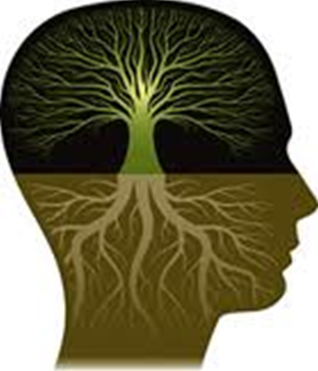A Coaching Power Tool created by Ayeda Ravindran
(Health, Wellness and Fitness, INDIA)
Our remedies oft in ourselves do lie.
William Shakespeare
All’s Well That Ends Well
Overview
Grounding is a Power tool that I use in my coaching sessions in order to enhance the clients sense of being present. It is very effective in bringing a sense of peace and balance. This allows a more free flowing, harmonious session where client issues can be explored in an emotionally safe space.
Introduction
In Physics, grounding refers to the removal of excess charge from an object. We have all heard of the phrases “down to earth” or “grounded” referring to people who are stable or not carried away with emotions. When an individual is stressed and in the grip of strong emotions they often disassociate from the present and replay the traumatic incident over and over again.
In a coaching scenario, this can prove counter- productive as the client can often be externally focused on issues rather than open to exploring the root cause of the problem. If the client is stuck in blaming external circumstances and is unable or unwilling to look at their role in the problem, the situation becomes inherently un-coachable.
Therefore in order to achieve maximum effectiveness in a coaching session, I choose to use grounding to guide the client into a space of expansion and harmony.
Example of a grounding technique
Breathing Meditation with Visualization
Visualization is a process in which the client uses guided imagery to effect specific behaviors and events. The brain is unable to tell the difference between a real and an imagined event, and specific images can impact brain wave frequencies to lower and calm it down. The following is a visualization exercise to ground and center the client.
Have the client sit in a chair or sit cross legged on the floor. Make sure they are comfortable with no distractions. Relax. Ask then to close their eyes. Instruct them to relax every muscle in their body and every bone systematically from their face to their toes. Use the following dialogue with them.
- Focus on your breathing without letting your mind wander. If your mind wanders at any time bring it back to your breath. As you are breathing in, imagine that you are breathing in light. Imagine that this light is flowing in and through your system and out through the bottom of your feet.
- And as you breathe out, imagine that you are breathing out anything that is not necessary at this time, just letting it go easily and gently. Just continue to be aware that you are breathing in light and breathing out anything that is not useful at this time.
- Focus on your breath until you gain a calm and meditative state. Now slowly draw your attention to where you and the ground or chair connects.
- Pay attention to where your body feels the heaviest against the chair.
- Visualize a beam of light running through your body and down your spine , through your feet and into the earth
- Visualize the beam branching out like the roots of a tree into the Earth. Let your roots go deeper and deeper into the soil. Let it go deeper and deeper down, past the soil to the rocks within the earth, to the center of the earth. Imagine all the excess energy from the top of your head, through your body is channeled down this beam and absorbed into the center of the earth.
The client is now grounded. A quick way to test if they are grounded well or not is to ask them to balance on one leg. If this is easily achieved then grounding is accomplished.
Coach Application
As a coach, one needs to be completely present for the client. A coach needs to disassociate as much as possible from viewing the client and their situations through a “veil of illusions” or in other words a filter of their own emotions and feelings. While this might not be a 100% possible, using the process of grounding before a session can assist in putting the coach into a neutral space. This non judgmental space then helps to build trust within the client to share.
Client Application
In order for a client to get the maximum benefit out of a coaching session, he or she needs to be open to sharing and taking responsibility. Often clients come to a coach with an attitude of blame. They are so caught up in the drama and the emotion of the situation they are in, they are incapable of seeing their role or contribution in the situation.
A grounding exercise is a fast way to release any stress and emotional trauma held in the body and the mind. Carrying out the exercise with a client can lower the brain waves and release them for a while from holding on to their “story”.
Summary
Grounding is the first step in the process of the coach to gently guiding the client into a safe space where they can begin to let it go of held stress and trauma which might impact the effectiveness of a coaching session.
This tool has application both for the coach and the client and if practiced well can have a salubrious impact on both.
